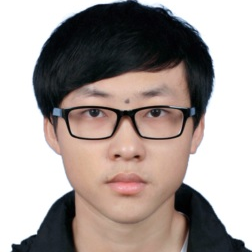Design and Applications of Nanogenerators
A special issue of Nanoenergy Advances (ISSN 2673-706X).
Deadline for manuscript submissions: closed (31 January 2023) | Viewed by 5184
Special Issue Editors
Interests: nanogenerators; self-powered sensors; wearable devices; flexible electronics and sensors; biomedical and implantable devices
Special Issues, Collections and Topics in MDPI journals
Interests: triboelectric nanogenerator for energy harvesting; charge excitation strategy; energy harvesting technology based on magnetostrictive/piezoelectric composite transducer; wearable electronics for health care; self-powered sensor and systems
Special Issues, Collections and Topics in MDPI journals
Special Issue Information
Dear Colleagues,
Nanogenerators (NGs) are the field of energy harvesting and self-powered sensing that rely on the Wang term ∂Ps/∂t in expanded Maxwell’s equation as the driving force for effectively converting mechanical energy into electric power/signals, which have broad applications in energy science, wearable electronics, IoTs, environmental protection, medical science, and artificial intelligence. To date, NGs have attracted worldwide interest owing to their merits of light weight, cost-effectiveness, ability to self-power, shape adjustability, high efficiency, etc. and have been increasingly recognized as a candidate for sustainable energy supply as worldwide public concern grows around sustainability. Hence, this Special Issue of Nanoenergy Advances focuses on the design and applications of nanogenerators and invites research and review articles to promote the development of nanogenerators.
Prof. Dr. Zhiyi Wu
Dr. Zhiming Lin
Dr. Binbin Zhang
Guest Editors
Manuscript Submission Information
Manuscripts should be submitted online at www.mdpi.com by registering and logging in to this website. Once you are registered, click here to go to the submission form. Manuscripts can be submitted until the deadline. All submissions that pass pre-check are peer-reviewed. Accepted papers will be published continuously in the journal (as soon as accepted) and will be listed together on the special issue website. Research articles, review articles as well as short communications are invited. For planned papers, a title and short abstract (about 100 words) can be sent to the Editorial Office for announcement on this website.
Submitted manuscripts should not have been published previously, nor be under consideration for publication elsewhere (except conference proceedings papers). All manuscripts are thoroughly refereed through a single-blind peer-review process. A guide for authors and other relevant information for submission of manuscripts is available on the Instructions for Authors page. Nanoenergy Advances is an international peer-reviewed open access quarterly journal published by MDPI.
Please visit the Instructions for Authors page before submitting a manuscript. The Article Processing Charge (APC) for publication in this open access journal is 1000 CHF (Swiss Francs). Submitted papers should be well formatted and use good English. Authors may use MDPI's English editing service prior to publication or during author revisions.
Keywords
- triboelectric nanogenerators
- piezoelectric nanogenerators
- energy harvesting technology
- self-powered sensors and systems
- smart sensing and its applications





